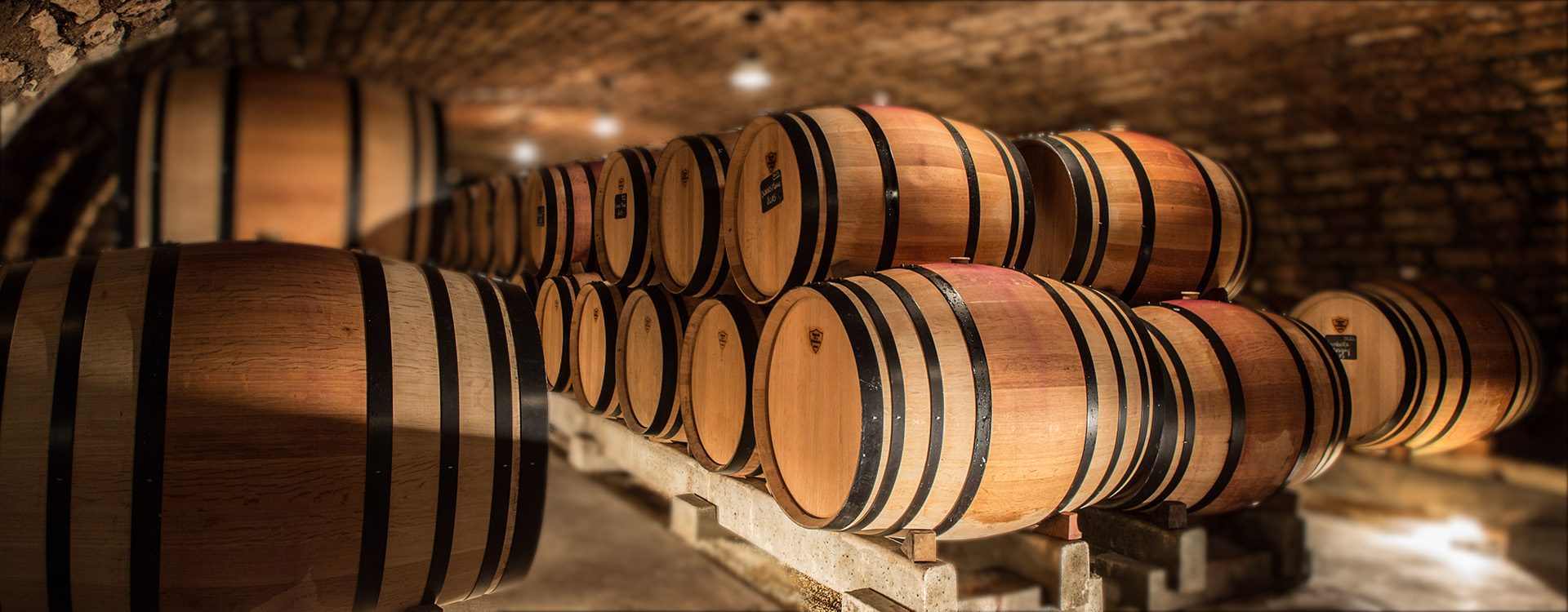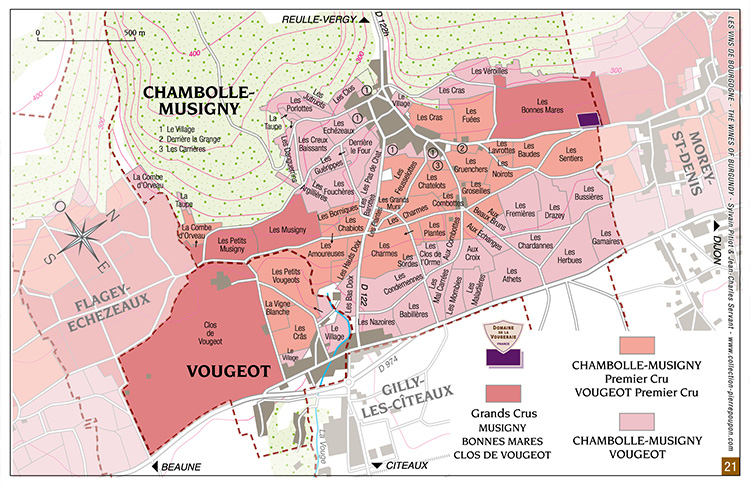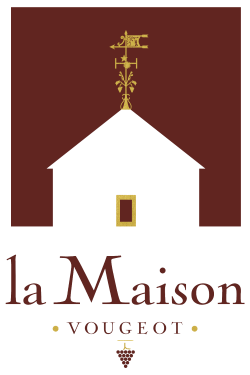The name of Bonnes Mares remains a puzzle. Is it a reminder of mother goddesses? An antique bas-relief illustrating this divine threesome, protecting motherhood, life and earthly fruit, was purportedly discovered on the site but is now lost. The idea sounds implausible, no better than the suggestion that it is a corruption of “bonnes mères”, good mothers. What is certain is that the vineyard was created by the Bernardine Sisters of Notre-Dame de Tart (between
It seems more likely that the name comes from the old French and Burgundian word marer (to cultivate). The Bonnes Mares, then, are well maintained vines, lovingly cared for. They are certainly worth the effort!
Les Bonnes Mares has never been a monopole enclosure, simply a jointly-held climat. Until the Revolution, the owners were mostly religious communities, noble and bourgeois families who left their mark on history, many of which have streets named after them in
Technical sheet
The appellation
At the start of Michel de Saint-Pierre’s novel The Aristocrats, set in

The vine
Surface : 0.7002 ha
Geographical situation: a unique micro-climate as the parcel is partly sheltered by rock from the old quarry.
Exposure: East
Plantings: from 1901 to 1998

Grape variety: 100% Pinot Noir
Soil and subsoil: pure silt with a very low rough sand equivalent. Fairly pebbly, very calcareous.
Planting density: 10 000 vines/ha
Rootstock: 50% of massal selection and 50 % of clones.
Organic agriculture: since 1998.
Official approval Ecocert®: 1999.
Biodynamic agriculture: 2001
Pruning: Guyot
Vineyard news: Ullage planted out. Earthing-up of the vines in winter. Spraying of nettle and rhubarb, horsetail, yarrow, tansy, comfrey tea during each treatment. Biodynamic preparations 500 and 501 at the end of the winter and of
The wine
Harvest date: September 4th, 2018 (root day).
Healthy crop. Sorting in the vineyard and in the winery
Yield: 38.5 hl/ha
73% of whole bunches, not crushed and vatted by gravity.
No yeast addition.
Maceration: pre-fermentation, cold (12-15° C) during 5 days.
Maceration: 19 days.
Light pumping-over until the end of maceration.
Length: 18 months in oak-barrels.
New barrels: 27 %
Origin of wood: Tronçais, Cîteaux.
Light and soft filtration. No fining.
February 10th 12th and 13th , 2020 (fruit and foot days)
Limited to 943 bottles, 201 magnums and 16 jeroboams.


Family Domaine at the heart of Burgundy
Contact us
7bis, rue de l’Eglise
21700 Premeaux Prissey
France
 See the pdf version
See the pdf version